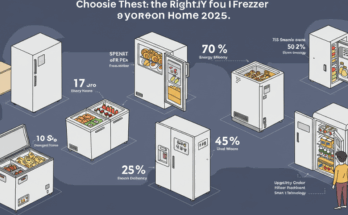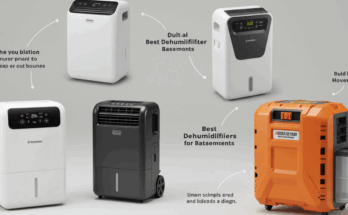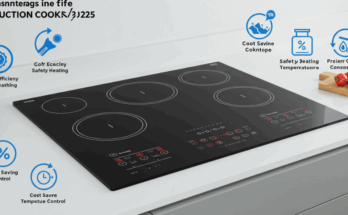Hey there! So, you’re shopping for a new washing machine? With all the options available in 2025, it can feel like you’re drowning in choices. But don’t worry—I’m here to guide you through the process and help you find the perfect washer for your needs. Whether you’re a busy parent tackling endless piles of laundry, a minimalist in a cozy apartment, or just someone who wants their clothes to come out spotless, there’s a machine out there for you. Let’s dive in and make this fun!
Why This Decision Matters
Why spend time researching washing machines? Well, it’s one of those appliances you use almost every week, if not every day. A good washer doesn’t just clean your clothes—it saves you time, cuts down on utility bills, and maybe even makes laundry a little less dreadful. In 2025, washing machines are smarter, more efficient, and packed with cool features. But with so many models, picking the wrong one could mean higher costs or constant repairs. Let’s get it right the first time!

Step 1: Know Your Washing Machine Types
Let’s start with the basics. There are three main types of washing machines, plus a couple of niche options. Each has its strengths and quirks, so here’s the lowdown:
- Front-Load Washers
These are the eco-friendly champs of the laundry world. They use about 10 gallons of water per load and less energy, which is great for your wallet and the environment. They’re also gentle on clothes, so your favorite sweater stays soft. The catch? Wash cycles take longer (65-120 minutes), and you need to clean the door seal regularly to avoid mold. If you’re all about efficiency, this is your pick.
Example: I once switched to a front-load washer and was amazed at how much I saved on water bills. But I learned the hard way to run a cleaning cycle monthly to keep it fresh!
Top brand: LG is a standout for reliability and performance (Consumer Reports). - Top-Load Agitator Washers
These are the classic, no-fuss machines. They’re affordable (starting at $380) and quick (35-105 minutes per cycle), making them great for those who want to get laundry done fast. But they’re rougher on clothes, noisier, and use more water (about 20 gallons per load). If you’re on a budget and don’t mind a bit of noise, they’re solid.
Fun fact: My parents still swear by their old top-load agitator—it’s been chugging along for years!
Top brand: Speed Queen is known for building durable agitators that last (Consumer Reports). - High-Efficiency (HE) Top-Load Washers
These are like a modern twist on top-loaders. They use less water (about 13 gallons per load) and clean well, but they can tangle clothes and take as long as front-loaders (35-105 minutes). They’re a great middle ground if you want efficiency without the mold worries of a front-loader.
Heads up: If you hate untangling clothes, keep an eye on reviews for this type.
Top brand: LG shines here too for reliability. - Compact Front-Load Washers
Perfect for small spaces like apartments or RVs, these washers (up to 2.7 cubic feet) are super efficient but have long wash times and can vibrate. If you’re tight on space, they’re a lifesaver.
Example: My friend Sarah lives in a tiny apartment and loves her compact washer—it fits perfectly in her laundry closet.
Top brands: Electrolux, LG, and Miele are reliable choices. - All-in-One Washer-Dryer Combos
These do it all in one drum—wash and dry. They’re great for small homes since they don’t need a separate dryer or vent, but drying takes longer. If you’re in a studio or tiny house, this could be your solution.
Note: They wash better than they dry, so patience is key.
| Type | Price Range | Wash Time | Water Use | Pros | Cons |
|---|---|---|---|---|---|
| Front-Load | $650-$2,200 | 65-120 min | 10 gal/load | Energy-efficient, gentle on clothes | Long cycles, mold risk |
| Top-Load Agitator | $380-$1,600 | 35-105 min | 20 gal/load | Affordable, fast cycles | Rough on clothes, noisy |
| HE Top-Load | $515-$1,200 | 35-105 min | 13 gal/load | Efficient, good performance | May tangle clothes |
| Compact Front-Load | $630-$2,450 | 60-100 min | Low | Space-saving, efficient | Long cycles, vibrates |
| All-in-One Combo | $1,390-$2,050 | 100-115 min | Low | Saves space, no vent needed | Long drying times |
Step 2: Size Up Your Laundry Needs
How much laundry do you do? That’s the big question. If you’re a single person or a couple, a smaller washer might do the trick. But if you have a big family or do laundry for a sports team, you’ll need more capacity. Here’s a quick guide:
- Small Loads: Compact washers (up to 2.7 cubic feet) hold about 6 bath towels. Great for small households.
- Medium Loads: Standard washers (around 4.5 cubic feet) can handle a king-size comforter or a full load.
- Large Loads: Large-capacity washers (up to 6.2 cubic feet) are perfect for big families, holding up to 17 bath towels.
Pro tip: Think about your biggest laundry day. Can you do it in one or two loads? If not, go bigger. For example, my family’s weekly laundry includes bedding and sports gear, so we need at least 4.5 cubic feet.
Step 3: Measure Your Space
Space is a dealbreaker for many. Full-sized washers are 27 inches wide, while compacts are 24 inches. But don’t forget to leave 6 inches behind for hookups and 1 inch between the washer and dryer. If you’re stacking, check vertical space too. Noise is another factor—front-loaders are quieter, but some vibrate more. If you’re in a small apartment, a compact model might be your best bet.
Quick tip: Measure twice, buy once! I once forgot to account for baseboards and had to return a washer that didn’t fit.
Step 4: Prioritize Energy and Water Efficiency
With utility bills creeping up, efficiency is a must. Look for washers with the Energy Star label or CR Green Choice certification, which use ≤10 gallons of water per load (6 gallons for compacts) and about 0.236 kWh of energy. Stainless steel drums are a bonus—they spin faster, so clothes come out drier, saving dryer time.
Did you know? Front-loaders are the most efficient, followed by HE top-loaders. If you’re eco-conscious, these are your go-to options (Consumer Reports).
Step 5: Check Reliability
Nobody wants a washer that breaks down after a year. Washing machines typically last 10+ years, but some brands are more dependable. Based on Consumer Reports’ member surveys:
- Front-Load and HE Top-Load: LG leads the pack.
- Top-Load Agitator: Speed Queen is built like a tank.
- Compact Front-Load: Electrolux, LG, and Miele are top performers.
Before buying, check reviews from trusted sources like Consumer Reports to ensure you’re getting a reliable model.
Step 6: Explore Cool Features
Modern washers are like mini computers. Here are some features that can make laundry less of a chore:
- WiFi Connectivity: Start cycles from your phone, get cycle-end alerts, or track energy use. Perfect for busy folks.
- Automatic Temperature Control: Gets the water just right for every load.
- Extra Rinse Cycle: Ideal for sensitive skin or hard-water areas.
- Automatic Dispensers: Hold months of detergent, so you don’t have to measure every time.
- Stain Pretreatment: Special cycles or compartments tackle tough stains.
Personal favorite: The automatic dispenser is a game-changer—I fill it once and forget about it for months!
Step 7: Keep It Running Smoothly
A little maintenance goes a long way. Here’s how to keep your washer in top shape:
- Clean Regularly: Wipe the detergent drawer and door seal to prevent buildup.
- Run a Cleaning Cycle: Use the self-clean cycle every few months to banish odors.
- Prevent Mold in Front-Loaders: Leave the door open after each load to dry it out.
Lesson learned: I once ignored my front-loader’s cleaning cycle and ended up with a musty smell. Now I’m religious about maintenance!
Step 8: Consider a Washer-Dryer Set
If you need a dryer too, buying a set can save you money and ensure compatibility, especially for stacking. Focus on the washer first—it has more features to choose from. Check reviews for set performance at Consumer Reports.
Wrapping It Up
Choosing the right washing machine in 2025 is all about matching your needs to the right model. Think about your space, laundry volume, budget, and must-have features. If you want efficiency, go for a front-load or HE top-load washer. On a budget? A top-load agitator might be perfect. Tight on space? Don’t overlook compacts or all-in-one combos.
Here’s a quick recap:
- Front-Load: Efficient, gentle, but needs maintenance.
- Top-Load Agitator: Affordable, fast, but rough on clothes.
- HE Top-Load: Efficient, good performance, but may tangle clothes.
- Compact: Great for small spaces.
- All-in-One: Ideal for tiny homes, but drying is slow.
Pick a reliable brand like LG, Speed Queen, or Miele, and check for energy efficiency and smart features. With the right washer, laundry day might just become a little less daunting. Happy washing!



